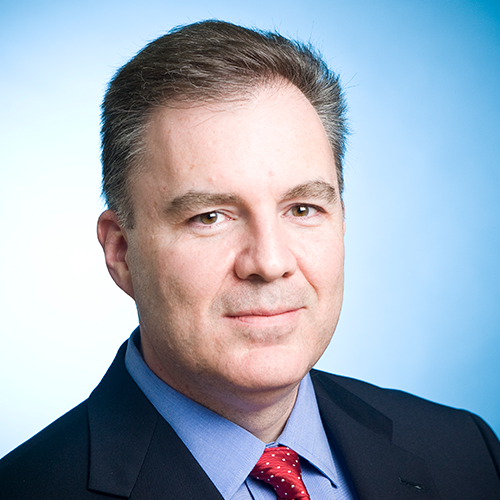How to Create a Preventive Maintenance Plan: Q&A with Michael Hanley


As Senior VP of Facilities and Development Services, Michael Hanley provides senior-level oversight of all maintenance; furniture, fixtures, and equipment (FF&E); and CapEx programs. He works closely with operations to ensure Campus Advantage standards are in place when managing large CapEx projects. He also provides consulting on new development projects during the planning and design phase. Michael began his career in student housing in 1988 as a resident assistant and has had a 30-year career in public and private student housing management and operations, in numerous roles, across the United States and internationally.
1. You have a long tenure in the student housing industry. Can you tell us a little about how you started focusing specifically on CapEx, FF&E, and maintenance?
I joined the Navy right after high school. I served as an electronics technician and worked with aircraft, so maintenance was a big focus for me — plus, everything was very centered around procedures and attention to detail. After a six-year hitch, I attended and graduated from Old Dominion University, where I was working in the Housing office, I got recruited by American Campus Communities (ACC). I held various roles at ACC, including general manager and regional manager, then accepted the VP of operations Asset Campus Housing, so I very much have an operations background as well. But because so much of my experience with student housing centered around brand-new developments — quite literally walking around in work boots as they’re being built, dealing with general contractors, things like that — it naturally translated to taking care of distressed assets.
In our early days at Campus Advantage, my role would be to travel to the community and make sure it was up to par for students to live there. We needed someone to say, “Yeah, granite countertops and vinyl flooring are great, but you won’t be able to lease successfully without HVAC, hot water heaters, and roofs.” Successful repositioning of our communities depended on significant capital investments and improvements, and because I had a lot of experience with construction, development, and initial operations, I found myself really focusing on this aspect of the business. Plus, it just really suited my interests.
2. How would you define preventive maintenance?
Preventive maintenance is when you protect community assets and extend the life of equipment by repairing or replacing it before it fails. It’s also about anticipating problems before they become emergencies. You don’t want to run something until it fails — you want to know that it’s going to be failing soon and hopefully have a planned replacement before that.
Let’s take air filters, for example. Part of our preventive maintenance plan is maintaining the air conditioning systems. If air conditioning units are inspected and cleaned regularly, and the filters are replaced at specific intervals, that air conditioning unit will perform optimally and operate for years. On the other hand, if no preventive maintenance is done, you’ll have frequent interruptions because that clogged filter could cause a pan to overflow, potentially cause damage or mold, and of course, the resident could lose air conditioning. We don’t want to get to that point if we can stop it before it happens.
3. What are some of the key benefits of having a preventive maintenance plan for your property?
In addition to just being more efficient in the long run, a good preventive maintenance plan can result in higher maintenance staff morale, better community performance, and of course, more renewals. As a maintenance staff, it can be discouraging to show up every day and just be putting out fires. Instead of doing things to keep residents happy and take care of things, they’re having to be reactive. I do a lot of training for our facilities teams, and I truly believe that if everything is very clean and works properly, you can successfully lease a community — even without the new, shiny, or gimmicky things.
4. Without a preventive maintenance plan, what are some common issues that can occur?
When your maintenance team is solely reactive to issues as they come up, it’s a less efficient system overall. That means higher operating costs, and maintenance going in and out of apartments frequently dealing with those problems. Also, you’ll have a shorter life span on your facilities; some equipment can get 20 years if it’s well maintained, but you could lose 10 years of that if you neglect preventive maintenance.
I also think the cost that frequently goes unnoticed by a lot of managers is the eventual loss in leasing renewals. If a resident is having to call in a frequent work order, they’re going to be really unhappy and remember that, especially when it comes time for renewals. It’s important to focus on those daily and weekly leasing numbers, but it can be hard to see the long-range impact of not maintaining the facilities. It might be easy to neglect your maintenance program for a while, but over time, it does catch up with you.
5. Who should typically be involved in developing this plan? Who is typically responsible for overseeing or executing it?
The maintenance supervisor and general manager are really the ones primarily responsible for making sure the preventive maintenance plans are executed. They should be walking the building, understanding what the issues are. A lot of times, a general manager will be much more familiar with the leasing side of things — they don’t have much experience with maintenance or repairs. It can definitely be a challenge. So we have a lot of guidelines and documents designed to help them navigate that, and I also get a day to train them on facilities management. We’ve set up our org charts in a way that gives them tools and support to succeed, and I think that’s something Campus Advantage does very well.
6. Are preventive maintenance plans primarily used for older assets, or is that a common misconception?
That’s a common misconception. People get comfortable with developments because everything’s new, but new stuff requires preventive maintenance as well.
No matter the age of the asset, getting a quarterly health and safety inspection done is a really important cornerstone. It should only take about five minutes per unit, but we’re getting in there and checking the life safety stuff. We’re checking the windows. We’re looking for the running toilets, the burned light bulbs, the rubbing doors, and the loose towel bars. Does the refrigerator have a leak in the back of it that no one sees? Is it damaging the floorboards? Oh, gosh. When you get in there every 90 days and catch those things before they actually do damage, you’ve really saved a lot of money. And that’s going to be true of new as well as old communities.
7. Can you give us a simple overview to create a preventive maintenance plan for a community?
First, you need to identify the things that need regular inspection and determine frequency, whether it’s weekly, monthly, quarterly, annually, what have you. When you break it down, let’s say, at a typical garden-style apartment, there’s probably going to be about 12–18 recurring tasks that fall into your preventive maintenance plan, from quarterly unit and annual elevator inspections to inspecting and lubricating the motors on the front gates.
You also need to have some program to make sure people actually do these inspections and get it documented. Someone needs to sign off on it so we have a record of it actually occurring.
Lastly, if any discrepancies are found, you need to make sure they’re acted on. It’s like, “OK, this toilet’s running. So we’ve identified the problem. Well now you need to go back and fix that toilet at some point.” Because that’s the whole point of preventive maintenance. An ounce of prevention is worth a pound of cure — the smallest of things can truly lead to the biggest problems.
8. Are there any other helpful tools or resources you’d recommend?
At Campus Advantage, we offer guidelines and training on how to create a preventive maintenance plan. We have also created workbooks around health and safety inspections, CapEx planning to identify future maintenance needs, and other things like that.
We provide these tools to our maintenance supervisors, but a lot of times when we take over a new community, my team will travel to the site and actually help create that initial preventive plan. Many communities will go through the work of identifying the key steps, but then it just sits in a binder collecting dust; there’s almost no follow-through. But CA does a great job of making sure we monitor and that these actions are happening.